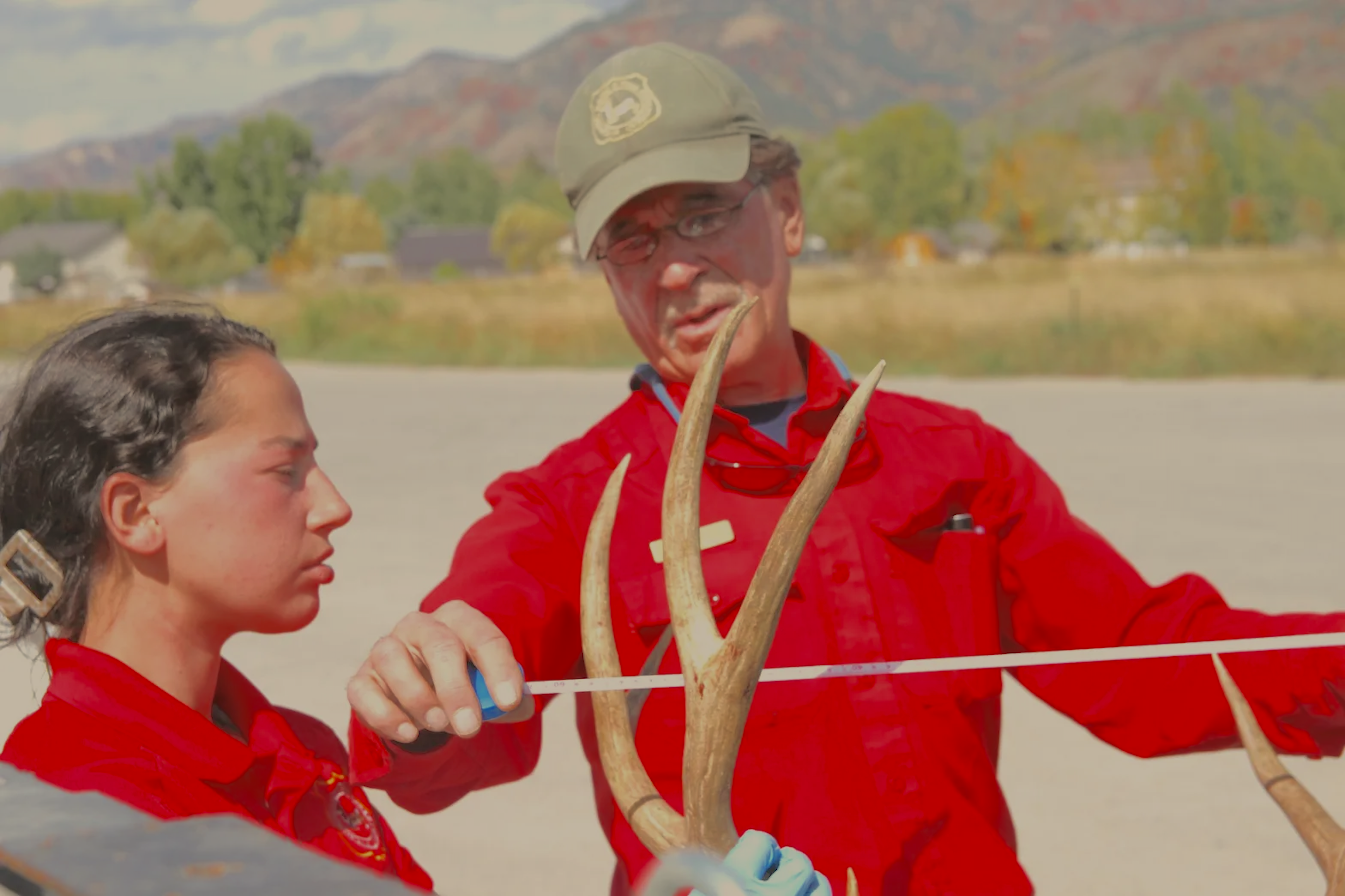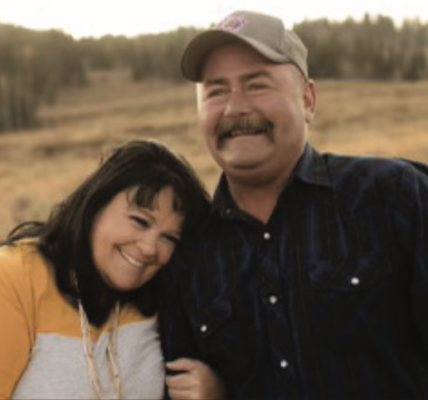
• Game and Fish biologists checking hunter-killed mule deer at historic Greys River check station observed a 74% decline in harvested animals compared to 2022.
By Mike Koshmrl, WyoFile.com
ALPINE — Gary Fralick’s calm demeanor shifted to a hustle for the hour that a steady stream of severed heads made its way through his check station on the last Saturday of deer hunting season.
The Thayne-based Wyoming Game and Fish Department biologist and his colleague, Kelsie Hayes, checked one ungulate deadhead after another. The red-shirted duo was posted up where Greys River Road exits the Wyoming and Salt River mountain ranges. Fralick knows the spot well: This fall marked his 30th straight season staffing the historic check station.
The mountains rising over Fralick’s post grow a lot of big bucks, but 2023 was a little different.
“This is the slowest hunt since 1993, without a doubt,” Fralick said during a lull in checking bull elk and buck mule deer heads.
The numbers tell the story. Greys River is known and widely promoted as a destination hunt for trophy class mule deer. During a typical fall, far more than a hundred hunters roll by the historic Greys River check station with a buck they’ve killed — the count was 120 as recently as 2022. This fall? Just 31 buck muley deadheads checked.
“That’s a 74% decline,” Fralick said.
In some specific hunt areas the decline was deeper yet. Last fall Fralick and colleagues checked 100 hunter-killed mule deer in unit 144, which covers the northern Wyoming Range. This year just 17 came out of the same zone, marking an 83% drop.
That complete crash was predictable. The winter of 2022-’23 was a killer unlike any biologists had ever seen for Wyoming Range mule deer and pronghorn in the adjoining Green River basin. Roughly three in four adult pronghorn died, and the mule deer death rates were nearly as bad: 70% mortality in does and 60% for bucks. Virtually all the 2022-born fawns of both species perished.
Fralick, of course, knew going into his 2023 check-station duties that he was likely to see a lot fewer of one of his favorite things: big bucks. One measure of a buck is the spread of his antlers, and a 24”-or-wider antler bucket is pretty big.
Of the bucks checked at his station over the last 34 years, nearly 40% of the 4,000 buck deer have hit that two-foot or wider mark, Fralick said. “Crazy data point,” he said.
Fralick has measured antler buckets up to 36” wide coming out of the Wyoming Range. It’s a safe bet to call that a “really big buck.”
Generations of wardens and biologists have measured antlers at the Greys River check station. According to Wyoming Wildlife Magazine — a publication of the Game and Fish Department — the station on the outskirts of Alpine is the longest-running in all of Wyoming and potentially even the entire western United States, dating back to 1929. In the early years it was intended to prevent cattle rustling, the magazine reported, in addition to making sure big game hunters were abiding by the rules.
Fralick is as much a part of that history as anybody.
Many of the hunters the longtime biologist encounters remember him, and vice versa, from their past stops at the check station. He keeps a photobook full of big bucks on the tailgate of his green Game and Fish pickup, eagerly encouraging passersby to take a look. A group of Oregon hunters who checked three elk and a deer did just that, paging through and trying to find snaps of their own deadheads from 2018 and 2019.
Fralick’s also seen the big fluctuations in deer populations and hunter success over the three decades he’s been posted up on the banks of the Greys River. Recovery from the current crash is likely to take longer than those in the past, he said, like the winter of 2016-’17. Wyoming’s trying to help the herd recover, though the strategies the state selected under pressure have scant scientific support, like killing more mountain lions. Hunters, too, are trying to help, by giving up their tags, though that’s also unlikely to have any effect on the deer population come future falls.
“The trajectory of the herd is dictated by does producing fawns, and fawns surviving,” Fralick said. “It’s not based on bucks at all.”
Fralick asked most hunters who stopped by whether they were seeing does with fawns. The group of Oregon hunters saw “a lot” — maybe 50. “We saw a lot of twins,” one man reported.
Fralick and Hayes were encouraged. Whether big buck land bounces back quickly mostly depends on what Mother Nature has in store for those young ungulates in the months and years ahead.
“If we have at least two years of high overwinter survival,” Fralick said, “we’ll start seeing an uptick.”





